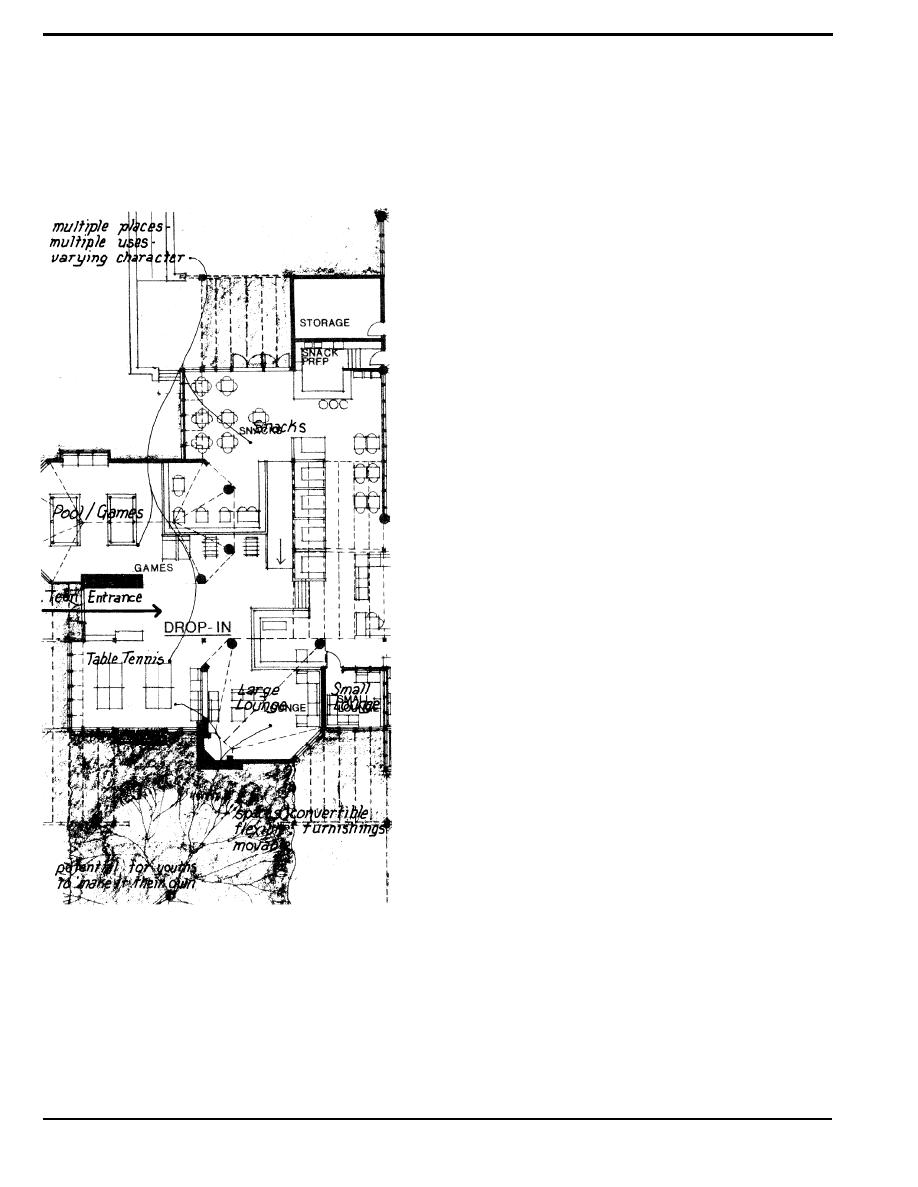
Chapter 7
a. Drop-in Module
(1) Game Room
(a) Description. The game room will mainly be used for
active, moderately noisy sports like table tennis, billiards,
and electronic game machines. Board games may also
be played here. Space should also be provided for
observing, waiting and lounging. This space should be
convertible for large group activities, such as dances,
dramatic presentations, large meetings, or for additional
lounge space. To provide this flexibility, large amounts
of storage space are required.
(b) Space Allocation. See Table 7 - 101.
(c) Relationships. The game space must be directly
accessible to, and visible from, the entry, as well as the
circulation area and the supervisor's desk. It would also
be desirable to have access and visibility to the game
room from the lounge spaces (to combine them for vari-
ous large functions), the snack facilities and an outdoor
activity space. The game space must be able to be iso-
lated acoustically from one of the lounges, and from
other major functions such as programmed and large
activity spaces.
(2) Lounges
(a) Description. Both large and small lounges should
be provided. The large lounge will be used primarily for
socializing, conversation groups, small meetings, table
games, snacking, small dances, music listening, or for a
large group watching special events or television.
The small lounge will be for a single conversation group,
a few people watching television, or solitary activities
such as reading. Some part of the lounges should
always be available for quiet activities like studying, read-
ing, intense conversations, and individual use of video or
audio tape cassettes. The small lounge can be made a
part of the lobby, game or snack space, so long as it is
acoustically isolated from the large lounge.
(b) Space Allocation. See Table 7 - 102.
Drop-in Considerations
Page 7-90 DG 1110-3-142


 Previous Page
Previous Page
